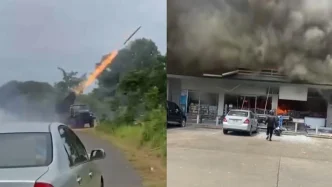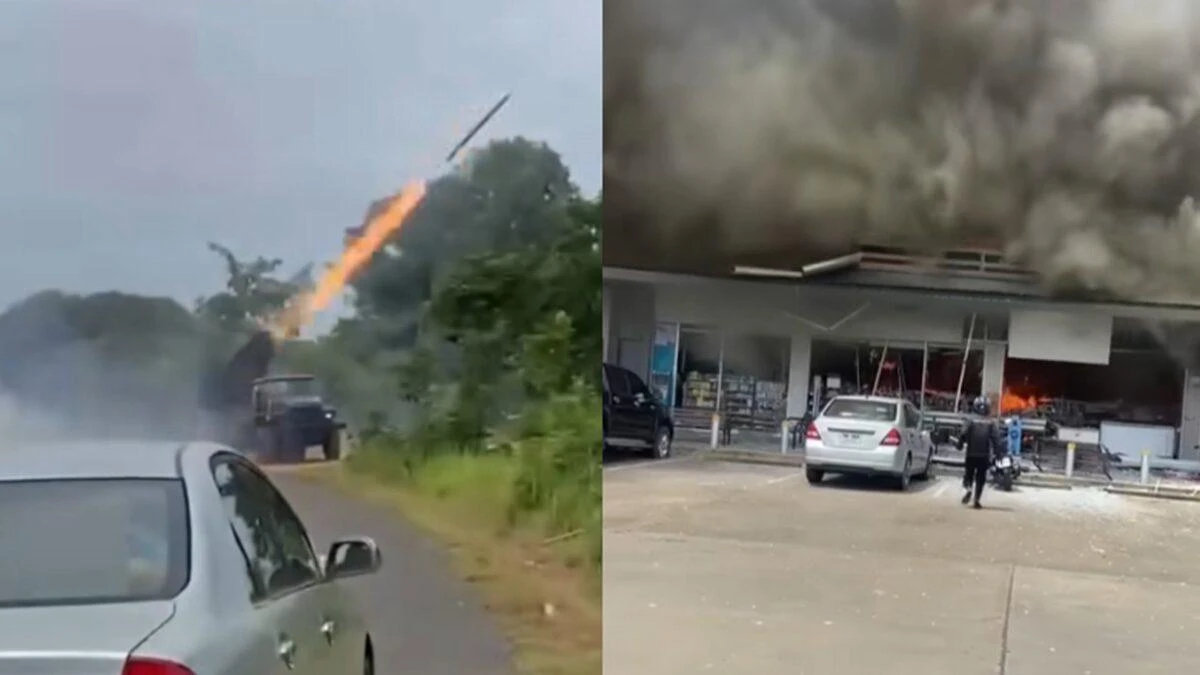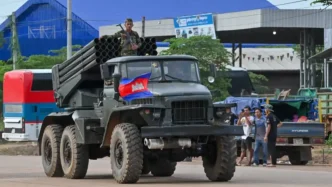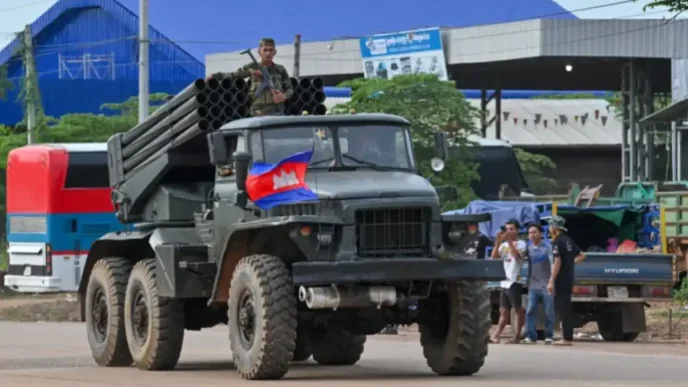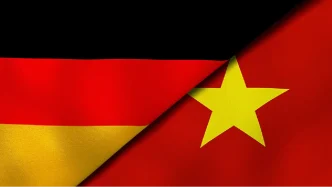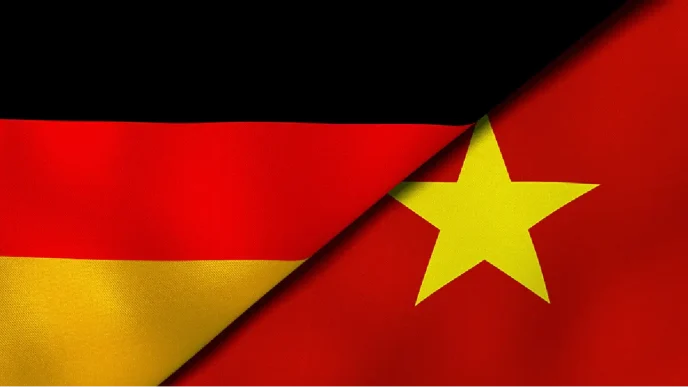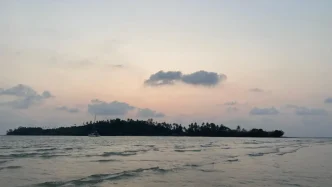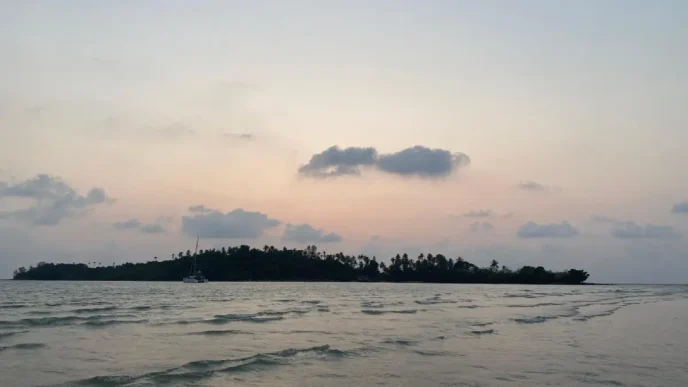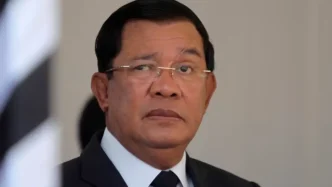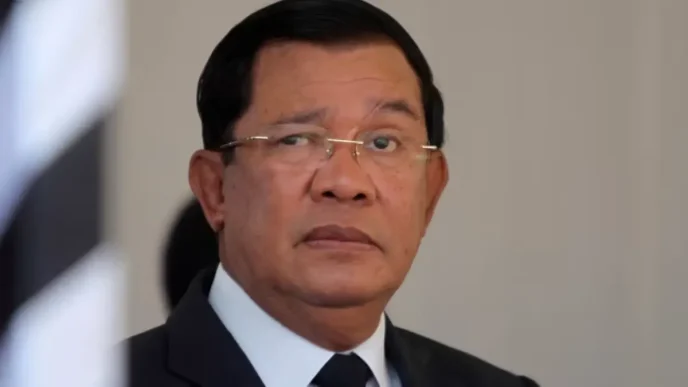Update – 24 July, 4:45 PM (Thailand time)
Death toll rises to 12 Thai dead, including 8 Thai civilians in Sisaket provence, in what the Thai government called an unprovoked and surprise attack.
Thai military escalates response with Operation “Yuttha Bodin” following rising civilian death toll.
| Time | Event |
|---|---|
| Chong Bok | Thai and Cambodian forces both deployed. |
| Chong An Ma | Thai F-16s dropped bombs on Cambodian positions. |
| Sam Tae, Kantharalak | Thai tanks attacked and seized territory. |
| Phu Phi / Preah Vihear | F-16s launched via Chong Ta Thao checkpoint. |
| Khao Sattasom | Two Cambodian tanks destroyed by Thai forces. |
| Khao Phra Wihan / Wat Kaew | Thai tanks bombarded, infantry occupied the area. |
| Phu Ma Kheua | Thai forces destroyed parts of Cambodian supply cable cars. |
| Chong Jom | Both sides engaged in mutual attacks. |
| Prasat Ta Kwai | Cambodia deployed troops; Thailand launched second wave attack. |
| Prasat Ta Muen Thom | Thai forces deployed; Cambodia attempted to counterattack. |
General Pana Klaewplodtuk has launched coordinated land and air strikes after reports confirmed 12 Thai civilian deaths from Cambodian rocket fire. Counter-attacks included F-16 bombings, tank-led assaults, and destruction of Cambodian military assets across multiple border points. Intense clashes continue at Prasat Ta Kwai, Prasat Ta Muen Thom, and Chong Jom.
A deadly escalation of violence along the Thai-Cambodian border has left at least eight civilians dead and several others injured, as artillery shelling and military confrontations intensify in Thailand’s Surin and Si Sa Ket provinces. The clashes, centered around disputed areas near Prasat Ta Muen Thom, have reignited long-standing tensions over territorial claims, with both sides accusing the other of initiating hostilities. As schools close and communities evacuate, the human toll of this conflict underscores the urgent need for de-escalation in a region scarred by historical disputes.
Chronology
| Time | Event |
|---|---|
| 7:35 AM | Thai side failed to negotiate temple access with Cambodia; barbed wire installed. Cambodia deployed weapons, drones heard. |
| 8:20 AM | Exchange of fire near Wild Boar base. Both sides blame each other. |
| 9:20 AM | Skirmish along border road. One Thai soldier injured. |
| 9:40 AM | Thailand condemns Cambodia after BM-21 rockets hit Kap Choeng, injuring 3 civilians. |
| 10:03 AM | Cambodian army fired cannons in Prasat Ta Kwai area. |
| 10:30 AM | Education Minister ordered school closures in affected areas. |
| 10:42 AM | Video published showing BM-21 attack on Thai homes in Kap Choeng. |
| 10:58 AM | 6 Thai F-16s launched. Cambodian 8th Regiment and 9th Brigade reportedly destroyed. |
| 11:04 AM | BM-21 rockets struck Phnom Dongrak Hospital, injuring civilians. |
| 11:26 AM | BM-21 rocket hit 7-Eleven at PTT station in Ban Phue, Sisaket; multiple injuries reported. |
| 11:30 AM | Army declared emergency evacuation after BM-21 strikes on civilian zones. |
| 11:37 AM | Thai army destroyed Cambodian-owned Phu Makhuea cable line. |
| 11:54 AM | Military confirms another attack on Phnom Dongrak Hospital. |
| 12:04 PM | BM-21 rockets continue targeting hospital area in Surin. |
| 12:09 PM | Kap Choeng residents again hit by BM-21 rockets; several injured. |
| 12:14 PM | All Thai F-16s confirmed returned safely by Air Force. |
Deadly Shelling Targets Civilian Areas
The latest wave of violence erupted on July 24, 2025, when Cambodian artillery shells struck civilian areas in Thailand’s border provinces. In Si Sa Ket’s Kantharalak district, a shell landed at a petrol station, triggering an explosion and fire that killed two civilians. Reports from local authorities confirmed the devastating impact, with flames engulfing the station and leaving little chance for escape. Earlier that day, in Surin’s Kap Choeng district, two BM-21 rockets hit Ban Jorok village in Tambon Dan, severely injuring four people. Two of the injured—an adult and a 12-year-old boy—later succumbed to their injuries en route to the hospital.
The shelling did not spare critical infrastructure. A projectile landed outside the fence of Phanom Dong Rak Hospital in Surin, though the facility had been preemptively evacuated. More disturbingly, later reports indicated multiple attacks on civilian zones, including a BM-21 rocket strike on a convenience store at a gas station in Ban Phue, Kantharalak district, Si Sa Ket. Local military sources reported injuries to students and residents in the vicinity, though exact numbers remain unconfirmed due to the chaos of ongoing evacuations.
Thai military statements condemned the targeting of residential communities, with officials from Army Zone 2 alleging that Cambodian forces fired multi-barrel rockets into populated areas. The Royal Thai Army reported additional strikes on Phnom Dong Rak Hospital and Kap Choeng district throughout the day, with multiple civilians injured as rockets rained down on homes and public spaces.
Timeline of Escalation: From Negotiations to Combat
The violence followed a breakdown in negotiations over border access near Prasat Ta Muen Thom, a temple complex in a disputed zone claimed by both nations. At 7:35 a.m. on July 24, Thai officials from the Suranaree Army’s second task force attempted to inform Cambodian counterparts of their intent to close access to the site. When Cambodia rejected the proposal, Thai forces barricaded the entrance with barbed wire, prompting Cambodian troops to position weapons at the pagoda’s entrance. The sound of drones patrolling overhead heightened tensions, signaling an imminent clash.
By 8:20 p.m., hostilities broke out as Cambodian forces allegedly opened fire on Thailand’s Wild Boar base, located 200 meters east of Prasat Ta Muen Thom. Thai forces responded in self-defense, while Cambodian authorities claimed Thailand fired first, framing their actions as retaliatory. The skirmish escalated by 9:20 a.m. the following morning, with light and heavy weapons deployed along the border road, leaving at least one Thai soldier injured.
Throughout the morning, the conflict intensified. At 10:03 a.m., Cambodian troops reportedly entered the Prasat Ta Kwai area and fired cannons, while Thai military sources accused Cambodia of launching BM-21 missiles into residential zones in Kap Choeng district. By 10:30 a.m., Thailand’s Education Minister ordered the temporary closure of schools along the border to protect students and staff, a decision reflecting the growing danger to civilian life.
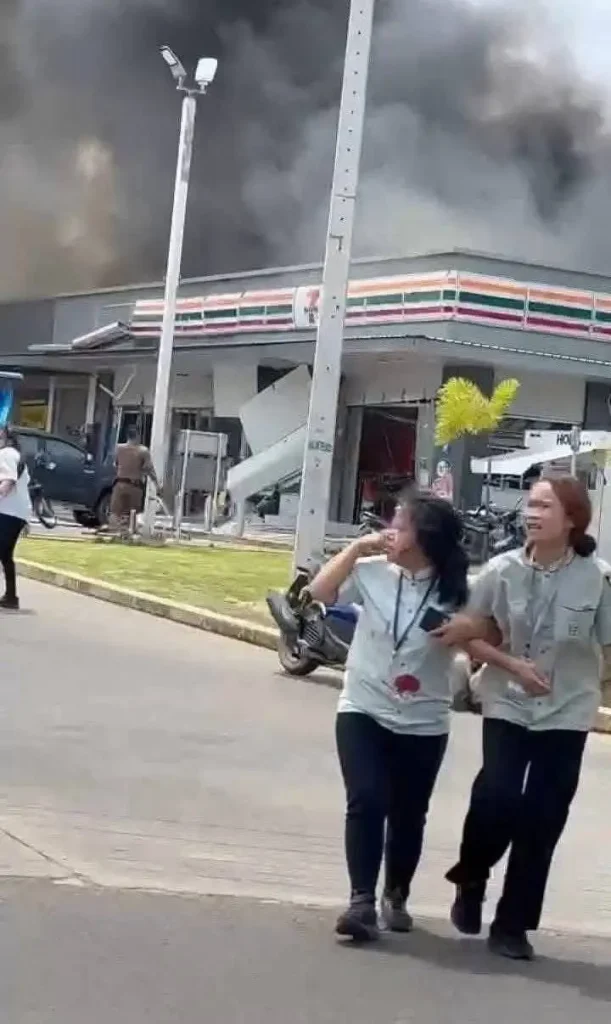
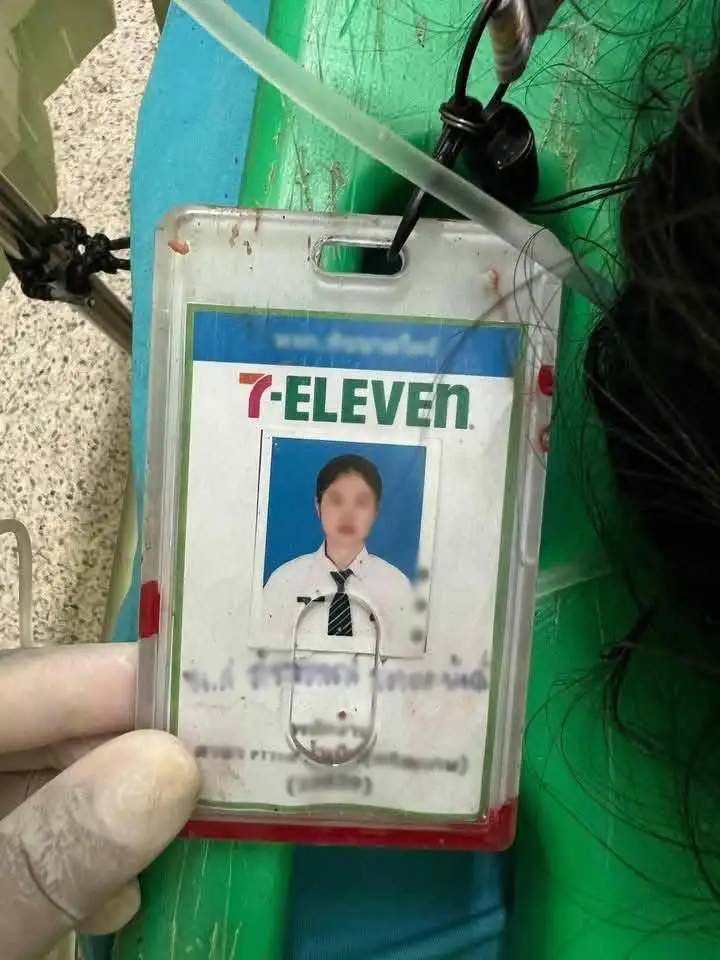
Images shared with Broadsheet Asia via Social Media users. ASEAN is aware of the ongoing escalations.
Thai military responses included airstrikes, with six F-16 fighter jets reportedly destroying Cambodian military positions, including bases of the 8th Infantry Regiment and 9th Infantry Brigade. All Thai jets returned safely by 12:14 p.m., according to Royal Thai Air Force statements. On the ground, Army Zone 2 reported the destruction of a Cambodian military cable line at Phu Makhuea, signaling a broader campaign to neutralize cross-border threats.
Historical Tensions and Territorial Disputes
The Thai-Cambodian border has long been a flashpoint for conflict, with disputes over territory dating back decades. Prasat Ta Muen Thom, like the nearby Preah Vihear temple, sits in a contested area awarded to Cambodia by a 1962 International Court of Justice ruling—a decision Thailand has historically challenged. Skirmishes over these sites have flared periodically, often fueled by domestic political pressures on both sides. The border region, dotted with military outposts and civilian settlements, remains a volatile zone where minor disagreements can spiral into deadly confrontations.
Analysts note that the current clashes coincide with heightened regional scrutiny of ASEAN’s ability to mediate internal disputes. Thailand and Cambodia, both members of the Association of Southeast Asian Nations, have previously relied on bilateral talks and ASEAN frameworks to manage tensions. However, the failure of negotiations on July 24 highlights the fragility of such mechanisms when national pride and territorial integrity are at stake. The targeting of civilian areas, if confirmed on the scale reported, could further complicate diplomatic efforts, as public outrage mounts over the loss of innocent lives.
Human Cost and Community Impact
Beyond the military engagements, the civilian toll of this conflict is stark. The death of eight individuals—four from the initial shelling and subsequent reports of additional casualties—marks a tragic escalation from past border incidents, where casualties were often limited to soldiers. The injuries to children, including a 12-year-old boy in Ban Jorok village, have amplified calls for an immediate ceasefire. Families in Surin and Si Sa Ket provinces face displacement, with emergency evacuations ordered by Army Zone 2 to protect residents from further artillery strikes.
Local authorities have struggled to provide real-time updates amid the chaos, but the closure of schools and evacuation of hospitals signal a crisis far beyond a typical border skirmish. Social media platforms have captured the public’s shock and grief, with ASEAN netizens expressing dismay at the violence. While specific posts remain unverified, the sentiment reflects a broader regional concern over the conflict’s impact on ordinary people caught in the crossfire.
Regional and International Implications
The escalation raises pressing questions about regional stability and the role of international actors in preventing further violence. ASEAN, often criticized for its non-interference policy, faces pressure to facilitate dialogue between Bangkok and Phnom Penh. Past border disputes have occasionally drawn attention from global powers, though direct intervention remains unlikely given the localized nature of the conflict. Still, the destruction of military infrastructure and civilian casualties could prompt calls for independent investigations into potential violations of international humanitarian law.
Economically, the border region—already underdeveloped compared to urban centers in Thailand and Cambodia—risks further isolation. Trade routes and cross-border commerce, vital for local livelihoods, have been disrupted by the violence. The closure of schools and public facilities may also have long-term effects on education and healthcare access, compounding the challenges faced by communities in Surin and Si Sa Ket.
Path Forward Remains Uncertain
As the dust settles on the latest round of clashes, the path to de-escalation remains unclear. Both Thailand and Cambodia have entrenched positions on territorial sovereignty, and the mutual accusations of aggression complicate efforts to assign responsibility. The loss of civilian lives, however, demands a shift in focus from military posturing to humanitarian priorities. Regional observers hope that backchannel diplomacy, potentially mediated by neutral ASEAN members, can prevent further bloodshed.
For now, residents of Thailand’s border provinces brace for uncertainty, their lives upended by a conflict rooted in historical grievances. The international community watches closely, aware that the ripple effects of this violence could test the resilience of Southeast Asia’s fragile peace. As artillery echoes fade, the question looms: will dialogue prevail, or will the cycle of retribution claim more lives?

